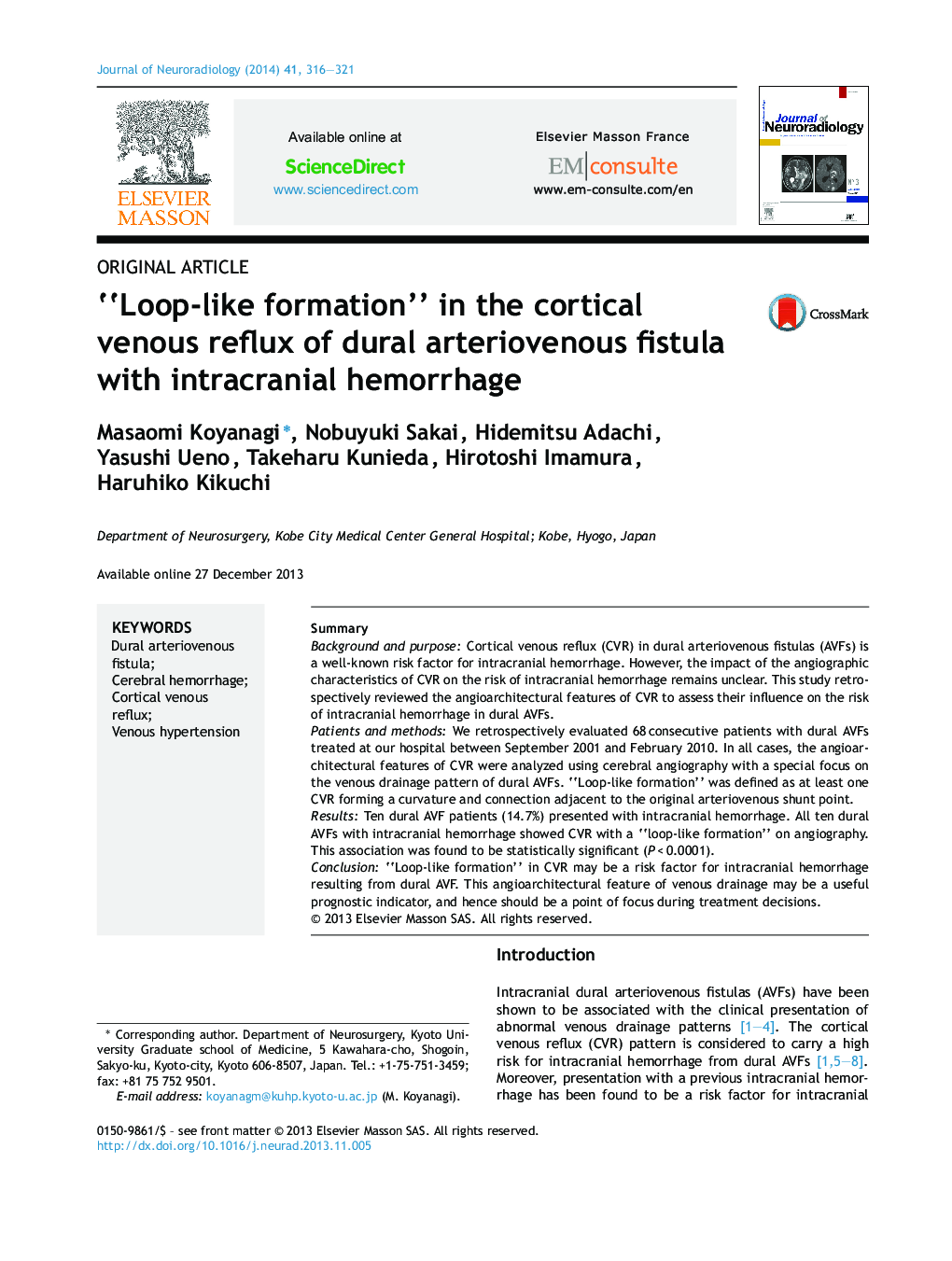| Article ID | Journal | Published Year | Pages | File Type |
|---|---|---|---|---|
| 4233646 | Journal of Neuroradiology | 2014 | 6 Pages |
SummaryBackground and purposeCortical venous reflux (CVR) in dural arteriovenous fistulas (AVFs) is a well-known risk factor for intracranial hemorrhage. However, the impact of the angiographic characteristics of CVR on the risk of intracranial hemorrhage remains unclear. This study retrospectively reviewed the angioarchitectural features of CVR to assess their influence on the risk of intracranial hemorrhage in dural AVFs.Patients and methodsWe retrospectively evaluated 68 consecutive patients with dural AVFs treated at our hospital between September 2001 and February 2010. In all cases, the angioarchitectural features of CVR were analyzed using cerebral angiography with a special focus on the venous drainage pattern of dural AVFs. “Loop-like formation” was defined as at least one CVR forming a curvature and connection adjacent to the original arteriovenous shunt point.ResultsTen dural AVF patients (14.7%) presented with intracranial hemorrhage. All ten dural AVFs with intracranial hemorrhage showed CVR with a “loop-like formation” on angiography. This association was found to be statistically significant (P < 0.0001).Conclusion“Loop-like formation” in CVR may be a risk factor for intracranial hemorrhage resulting from dural AVF. This angioarchitectural feature of venous drainage may be a useful prognostic indicator, and hence should be a point of focus during treatment decisions.
